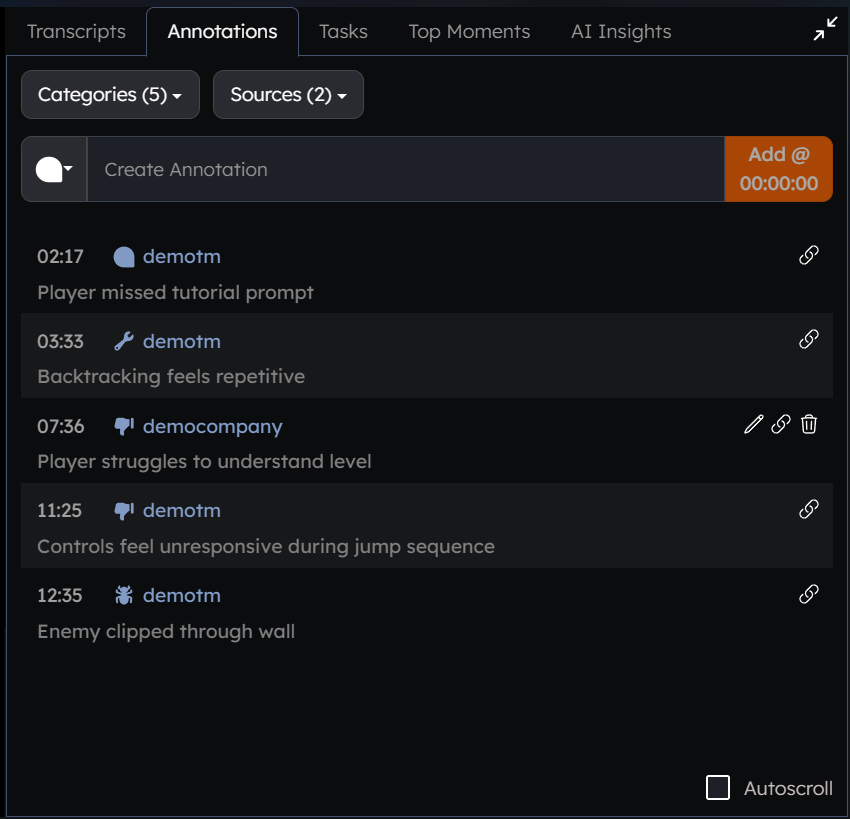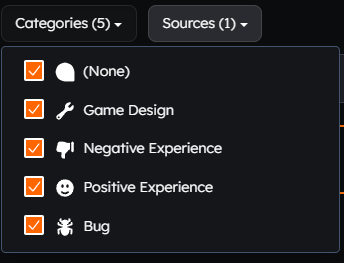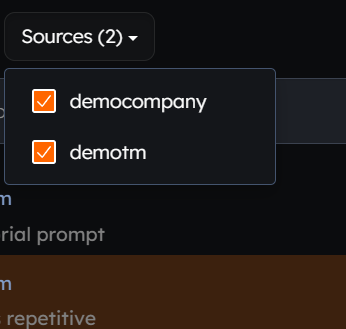Annotations
The Annotations Panel enables teams to capture and categorize key moments during a playtest session.

Creating and Managing Annotations#
Click the Add @ button to add a timestamped note to the gameplay video. An annotation consists of:
- A category (e.g., Bug, Game Design, Negative/Positive Experience)
- A source (e.g., the person or team creating the annotation)
- A description (e.g., “Player struggles to understand level”)
🏷️ Annotation Categories#
| Icon | Category | Description |
|---|---|---|
| 💬 | (None) | Uncategorized annotation |
| 🔧 | Game Design | Comments related to level design, mechanics, etc. |
| 👎 | Negative Experience | Frustrations, confusion, or any poor UX moments |
| 😀 | Positive Experience | Moments of delight, success, or enjoyment |
| 🐞 | Bug | Technical issues, glitches, or visual bugs |
✏️ Editing Annotations#
Click the pencil icon next to any annotation to edit its content or category.

This is useful for refining notes or correcting typos after reviewing the footage.
🔗 Copy Timestamped Link#
Each annotation is linked to a timestamp in the video. This allows you to jump to the exact moment it was recorded, for better contextual feedback.
Clicking the clip icon will allow you to :
- Copy a timestamped URL to your clipboard.
- Use the link to land directly at that point in the video.
- You can find this especially helpful when sharing specific feedback moments with teammates — making it easy to direct others to specific feedback points.
🗑️ Deleting Annotations#
Click the trash icon to permanently delete an annotation. Upon confirmation, this action cannot be undone, so double-check before removing important notes.
important
You can view and share all annotations created by any team member in your company.
However, you can only edit or delete annotations that you personally created.
Filtering Annotations#
Use the Categories and Sources dropdowns to filter annotations shown in the panel.


This helps you focus only on specific types of feedback during analysis.
✅ Best Practices#
- Use consistent language in annotations for searchability.
- Tag every annotation with the right category to aid in filtering.
- Use "Bug" only for reproducible technical issues.